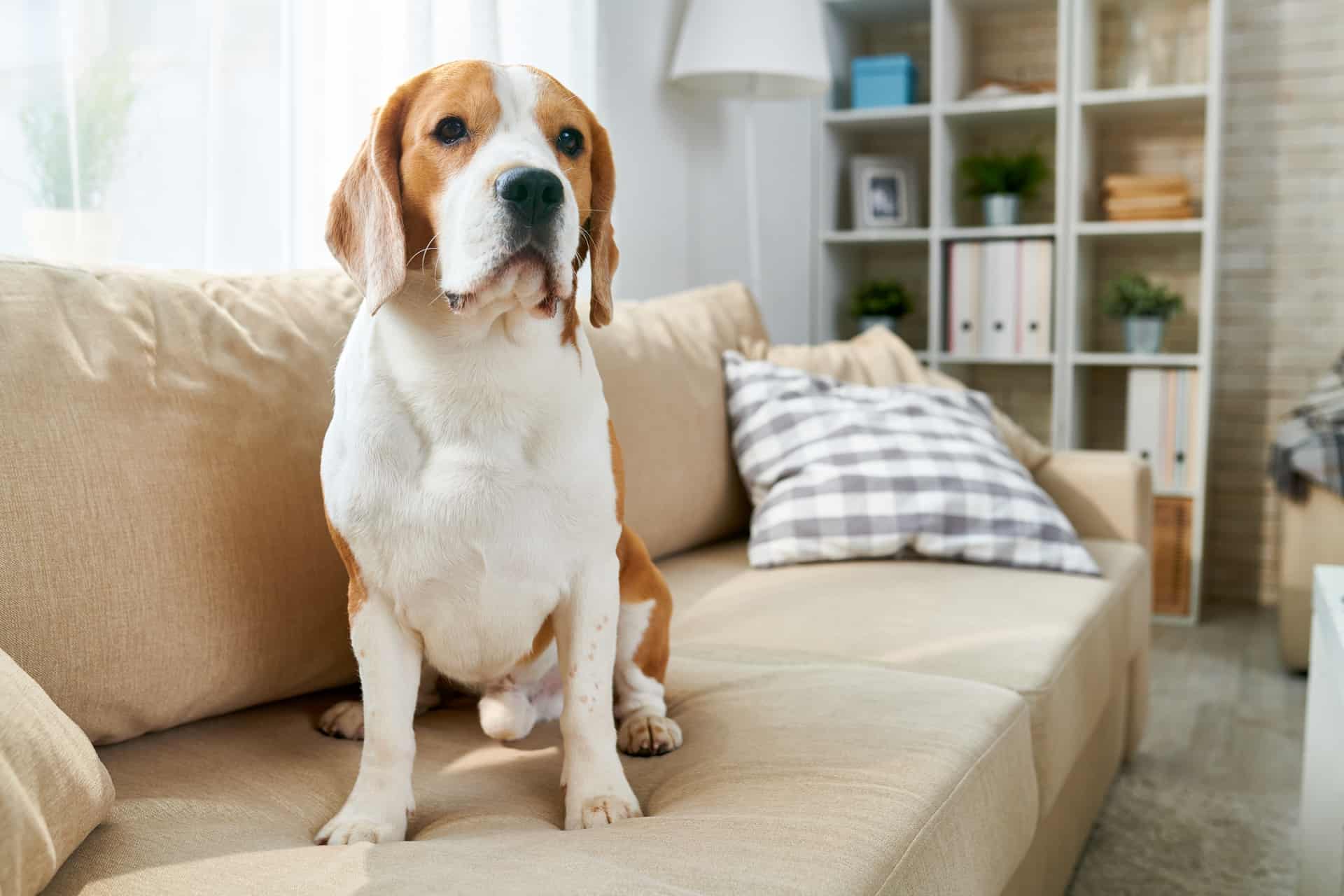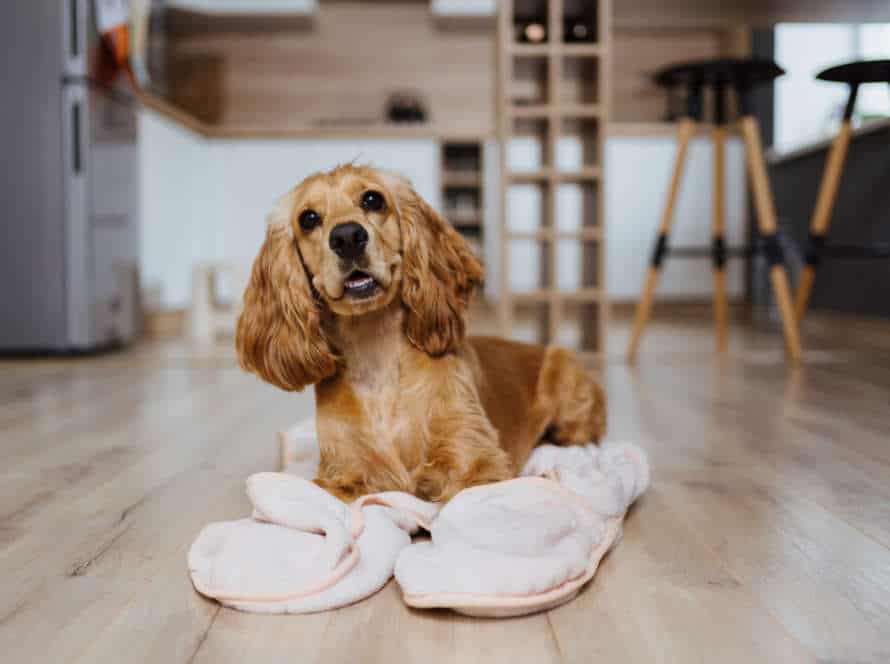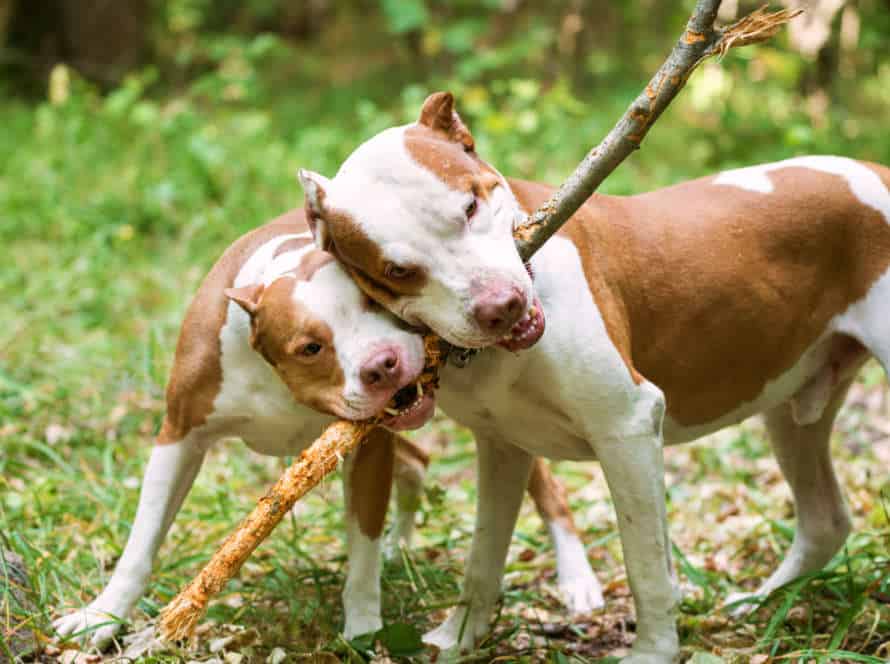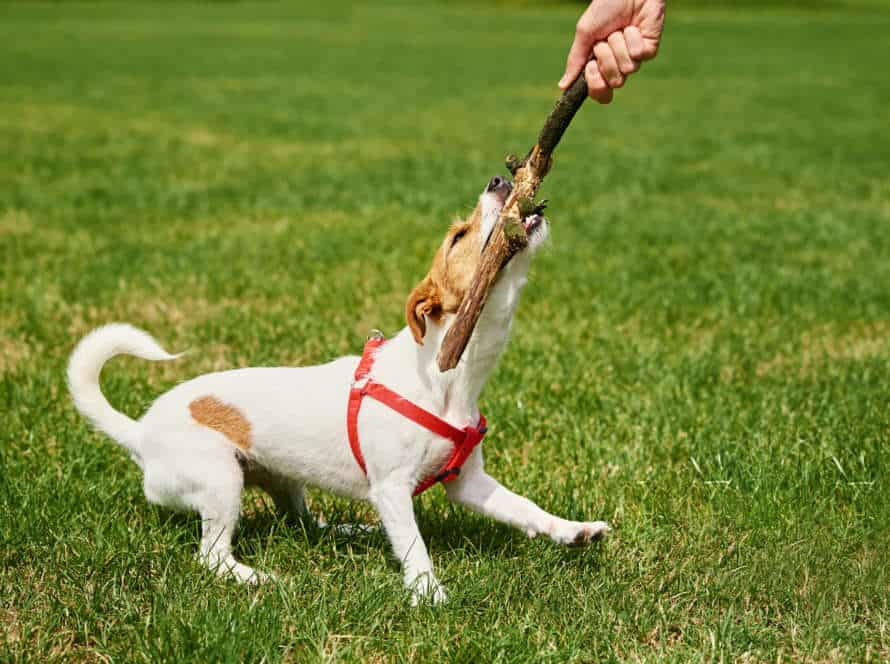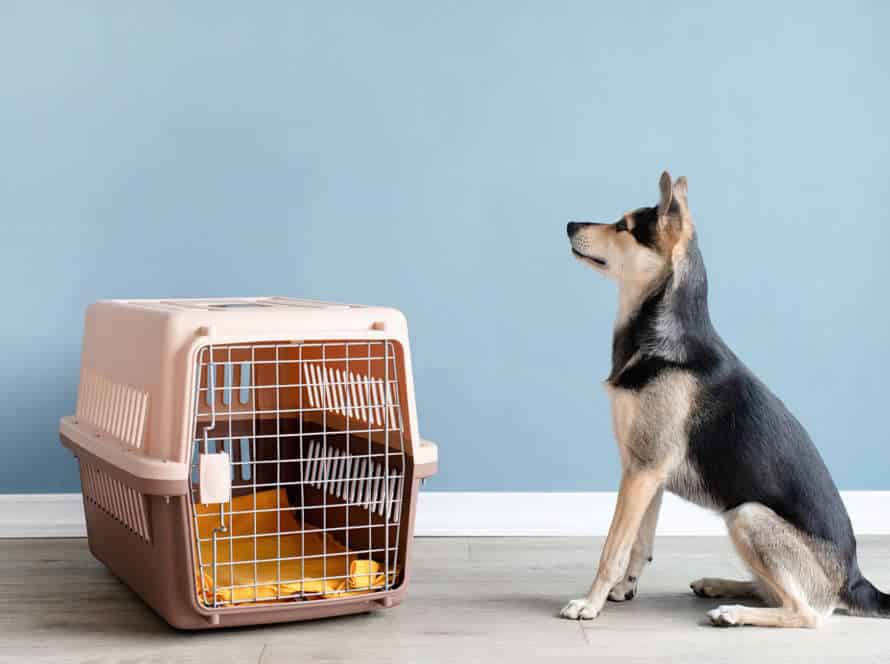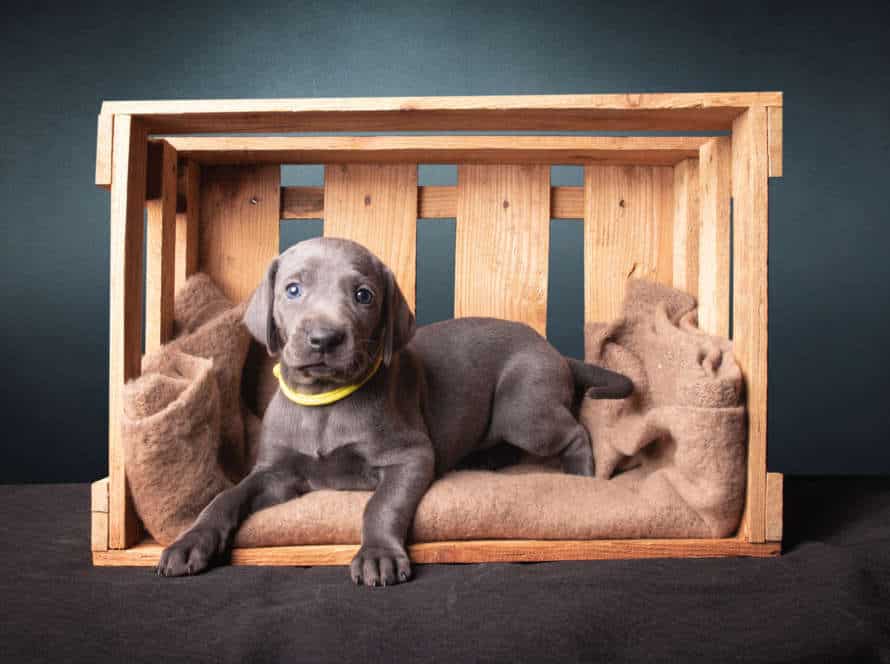Teaching Your Dog the “Release” Cue in the Stay Command
Teaching your pup the “Release” cue with the “Stay” command is essential. It helps them learn patience, focus and self-control. Here’s how:
- Say “release” in a firm voice, then give them a treat.
- Do this several times and each time, pair the “release” cue with the treat.
- Then, start slowly increasing the time of the “Stay” command before giving the “release” cue and the treat.
- Once they’ve learnt it, start using it in other commands and situations to reinforce their training.
- Reward them every time they obey the “release” cue to encourage good behavior.
Understanding Basic Dog Training Principles
Training a pup can be a fulfilling experience. It’s essential to comprehend the fundamentals of dog training. This involves recognizing the contrast between positive and negative reinforcement, how to utilize verbal directions and hand signals, and how to adequately reward your pup when they act properly. By knowing these principles, you’ll be able to instruct your dog commands like the “release” cue in the stay command.
The Importance of Consistency in Training
Consistency is key to training your pup successfully. Make a structure and repeat it until they understand what’s expected.
For the “release” cue in the “stay” command, make sure you stay consistent. Use the same word every time, like “OK” or “free“.
Always reinforce the stay command right before giving the release cue. Say the cue in a clear and firm voice each time.
Reward them when they respond correctly to your cue. This consistency helps your pup understand you and encourages good behaviour.
Regular repeats of training will help your pup obey and build the bond with their owner.
Positive Reinforcement Training Methods
Positive reinforcement is a great way to train your pup. Instead of punishing bad behavior, you reward good behavior.
To teach the “release” cue for the stay command:
- Command your pup to stay and hold out your hand.
- Wait a few seconds, then use a word like “free” or “okay” to let them move.
- As soon as they move, reward them with a treat or praise.
- Do this exercise often, increasing the distance and time of the stay each time.
- Always use positive reinforcement when training.
Consistency and patience are the keys to success.
With lots of love and positive reinforcement, your pup will learn all the commands!
The Benefits of Training Your Dog The Release Cue in The Stay Command
The “Release” cue in Stay training is important. Here are the benefits:
- More control – Teaching your dog to wait for Release cue before moving from Stay position gives you better control over their behavior.
- Impulse control – Consistently using the Release cue strengthens your dog’s impulse control and teaches them to wait for your command.
- Better manners – Training your dog with the Release cue develops better manners, making them easier to be around.
- Stronger bond – Training your dog helps create a stronger bond between you and your pet.
Remember, teaching the Release cue takes time, patience, and consistency. But, it’s worth it!
Preparing to Teach The Release Cue in The Stay Command
Teach your pup the “release cue” for the “stay” command. It’s a helpful skill. Prepare your dog’s mind and body beforehand. Here’s how:
- Make sure your pup is mentally ready.
- Ensure your dog is physically fit.
- Take the time to practice.
Choosing a Distraction-Free Environment
Creating a distraction-free environment is key when training your pup the “release” cue in the stay command. Here are some tips:
- Choose a quiet, enclosed area with no toys, other animals, or people.
- Turn off the TV or radio to reduce noise.
- Put away any food or treats that are not part of the session.
- Use a leash or a gated space to control your dog’s movements and block outside distractions.
By doing this, you can help your pup learn the release cue more easily and quickly.
Ensuring Your Dog is Comfortable with The Stay Command
Before using the “Release” cue alongside the Stay command, you must make sure your pet is comfortable with the Stay command. Here are the steps to get them ready:
- Get your dog into a sitting or standing position – whichever is more comfortable for them. Use a clear and concise voice command, like “sit” or “stay“.
- Reinforce the verbal command with hand signals. Put one hand with an open palm in front of their face – this will help them understand.
- Now increase the duration and distance of the stay. Start with 3 seconds, and gradually increase as they become familiar with the concept.
- Finally, introduce the release command, like “Okay” or “Free“. Make sure to use positive reinforcement every time they listen to it.
Picking The Right Release Cue
The “release cue” is very important in teaching your pup the “stay” command. Choosing the right one can make a huge difference. Here are some tips:
- Pick a simple, unambiguous word or phrase that is easy to remember and say.
- Avoid using words that sound like any other commands you use for your pup; this leads to confusion.
- Consistently use the same release cue; this helps your pup learn to link the command with the cue.
- Practice the cue in various environments and situations. This way, your pup will obey the cue regardless of the environment.
By following these tips, you can effectively teach your pup the release cue in the stay command – and enjoy a trained, obedient pet!
Teaching The Release Cue in The Stay Command
Teach your pup the “stay” command! It’s a handy skill that keeps them safe and well-mannered.
But, to make it easier to control when they can stay and when they can go, you must also teach them a release cue.
This article will show you the steps to teach your doggy the release cue for the stay command.
Starting with a Simple Stay Command with Treats as Reinforcement
Before teaching your pup the “Release” cue in the Stay Command, it’s essential to begin with a basic Stay command. Use treats for reinforcement!
Show your pup the treat. When they get excited, say “Stay” and put the treat on the ground.
If your pup stays for a few seconds, say “Okay” and let them have it. Repeat until your pup understands “Stay”.
Once comfortable, move on to teaching them the “Release” cue. Repeat the “Stay” command till they’re still. Then, use your release command, like “Okay”, “Free”, or “Release”. Give them a treat to reinforce the cue.
Gradually increase the time they must stay before releasing. This’ll help your pup become comfy with the Stay command for longer periods.
Gradually Increasing The Duration of the Stay Command
Training your pup the “Release” Cue for the Stay Command necessitates patience and a steady increase of the duration of the “Stay” order. Here are the steps to take:
- First, educate your pup the “Stay” command and confirm they can remain for at least 10 seconds.
- After your dog can manage the “Stay” command, introduce the “Release” cue by saying “Okay!” with an ecstatic voice and rewarding them.
- Gradually extend the time your pup has to stay before you say “Okay!” and release them.
- You can also practice releasing your dog from various positions (e.g. sitting, lying down).
- Be persistent and consistent with your training, and always honor your pup for a job well done.
Pro tip: Use a verbal and physical cue to release your dog, such as saying “Okay!” and using a hand gesture (e.g. a hand signal for “come”).
Introducing Verbal Cue For Release and Reinforcing it with Treats
Teaching your pup the “release” cue in the “stay” command is essential for obedience and discipline. The verbal cue signals the end of the stay, letting your dog be free.
Here’s how to teach your pup the release cue with treats:
- Tell ’em to stay, then show them a treat.
- Step back and say the chosen cue; use a hand signal, too.
- Wait a few minutes, then click and treat when they come to you.
- Repeat several times so they associate the verbal cue with the action.
- As they get better, add distractions, repeat the exercise, and increase the duration.
Remember to use yummy treats and, with time, your pup will master this command!
Common Mistakes to Avoid While Teaching The Release Cue in The Stay Command
Teaching your pup the “release” cue in the stay command is great! But, there are some mistakes to look out for. Be aware of these to make sure your pup learns it correctly and quickly. Here are the most common blunders to dodge:
Ending The Stay Command Prematurely
Teaching your pup the “release” phrase in the “stay” command? Here are tips to avoid ending it early:
- Never make the “stay” command longer than your dog can handle. Begin with short durations and build up.
- Include a cue like “okay” or “free” to show the end of the “stay” command.
- Reward only when your dog stays until you give the release cue.
- Don’t punish if they break the “stay”. Instead, use positive reinforcement.
By avoiding these mistakes, you can teach the release cue in a positive way for both you and your pup!
Using Physical Touch to Encourage Release
To teach a dog the “release” cue in the stay command, physical touch can be one of the most effective ways to encourage them. But, there are some mistakes you must avoid!
- Firstly, don’t be too aggressive when using physical touch. Pressure or punishment can create fear or aggression.
- Secondly, don’t just rely on physical touch. Verbal cues, praise and rewards, like treats or toys, work well.
- Thirdly, use a consistent touch or gesture when giving the “release” cue to prevent confusion.
- Fourthly, be patient and take your time teaching this. Rushing or getting frustrated will stop your pup from understanding it.
Pro tip: Once your pup does well with physical touch, slowly reduce its use and depend more on verbal cues and rewards as reinforcement.
Neglecting to Reward Your Dog After a Successful Release Cue
The “Release” cue is key for the “Stay” command. A common error when teaching this is forgetting to reward your pup when they follow the release cue. Here’s how to avoid this mistake:
- Reward your dog with a treat, verbal praise, or toy after they obey the release cue. This will remind them that releasing is great!
- Vary the time of the “Stay” command before the release cue. Gradually increase the time, to show them that staying is what’s wanted.
- Practice regularly, increasing distractions and duration of the “Stay” command. This will help your pup to hold their position for longer and respond to the release cue every time.
Advanced Techniques for Teaching The Release Cue in The Stay Command
Train your pup to understand the release cue in the stay command. This is a crucial part of obedience training. The release cue is the phrase or motion which tells your dog the stay is done and they can move. We’ll give you advanced methods to teach your pup the release cue. Such as:
- Building a reward system
- Using cues to boost the stay command
- And more
Introducing Distractions to The Environment
- For teaching the “Release” cue for the “Stay” command, try an advanced technique.
- Introduce distractions to the environment.
- Start in a quiet and controlled area.
- Gradually add minor distractions such as toys or food.
- Increase intensity and proximity of distractions when your dog progresses.
- Repeat the “Stay” command until you give the “Release” cue.
- Practice consistently so your dog learns to stay focused when distractions are present.
Pro tip: Be patient and reward good behavior to reinforce positive associations.
Learning To Use Non-Verbal Cues for Release
Teaching the “Release” Cue for the Stay Command takes some advanced techniques. Non-verbal cues can be just as effective as verbal ones for talking to your dog.
Here are some tips:
- Start using the verbal “stay” cue to train.
- Add a hand gesture too, like an open palm or finger snap.
- Be consistent with the hand signal so your dog links it to Release.
- Gradually reduce the verbal cue, relying only on the non-verbal signal.
- Reward your dog with treats and kind words when it understands the Release.
- Practice regularly to keep reinforcing the Release cue and make sure your dog responds to non-verbal cues.
Reinforcing The Release Cue in Different Scenarios
Reinforcing the Release Cue in varying scenarios is essential for your dog to understand and follow the Release command at all times. Here are some more advanced ways to teach it with the Stay command:
- Start with short stays and gradually increase the duration.
- Introduce distractions bit by bit, so your dog can stay focused on the Release command.
- Train your pup to release when they hear a clicker sound or a certain word, like “Okay” or “Free“.
- Use shorter distances first, then increase the gap between you and your doggy.
- Practice the Release command in various positions, such as sitting, standing, or lying down, to make sure your pup knows the command in any situation.
Reinforcing the Release Cue in different scenarios increases the chances that your dog will obey the Stay command in real life.
Frequently Asked Questions
1. What is the “release” cue in the stay command?
The “release” cue is a training command that allows your dog to be released from the “stay” command. It signals to your dog that they may now move or go back to their normal routine.
2. Why is the “release” cue important?
The “release” cue is important because it helps your dog understand when it’s appropriate to move again. Without the release cue, your dog may continue staying in one place indefinitely, which can cause confusion and frustration.
3. How do I teach my dog the “release” cue?
To teach the “release” cue, start with a solid “stay” command. Then, use a verbal command, such as “okay” or “free,” and indicate to your dog that they’re now free to move.
4. How long does it take to teach the “release” cue?
The time it takes to teach the “release” cue depends on your dog’s individual learning process. Some dogs may learn the cue in just a few training sessions, while others may require more training and repetition.
5. What if my dog doesn’t respond to the “release” cue?
If your dog doesn’t respond to the “release” cue, go back to basics and practice the “stay” command some more. Ensure your dog fully understands the “stay” command before moving on to the “release” cue.
6. Can I use a hand signal for the “release” cue?
Yes, you can use a hand signal for the “release” cue. Just ensure that your dog understands the hand signal and associates it with the “release” command.

